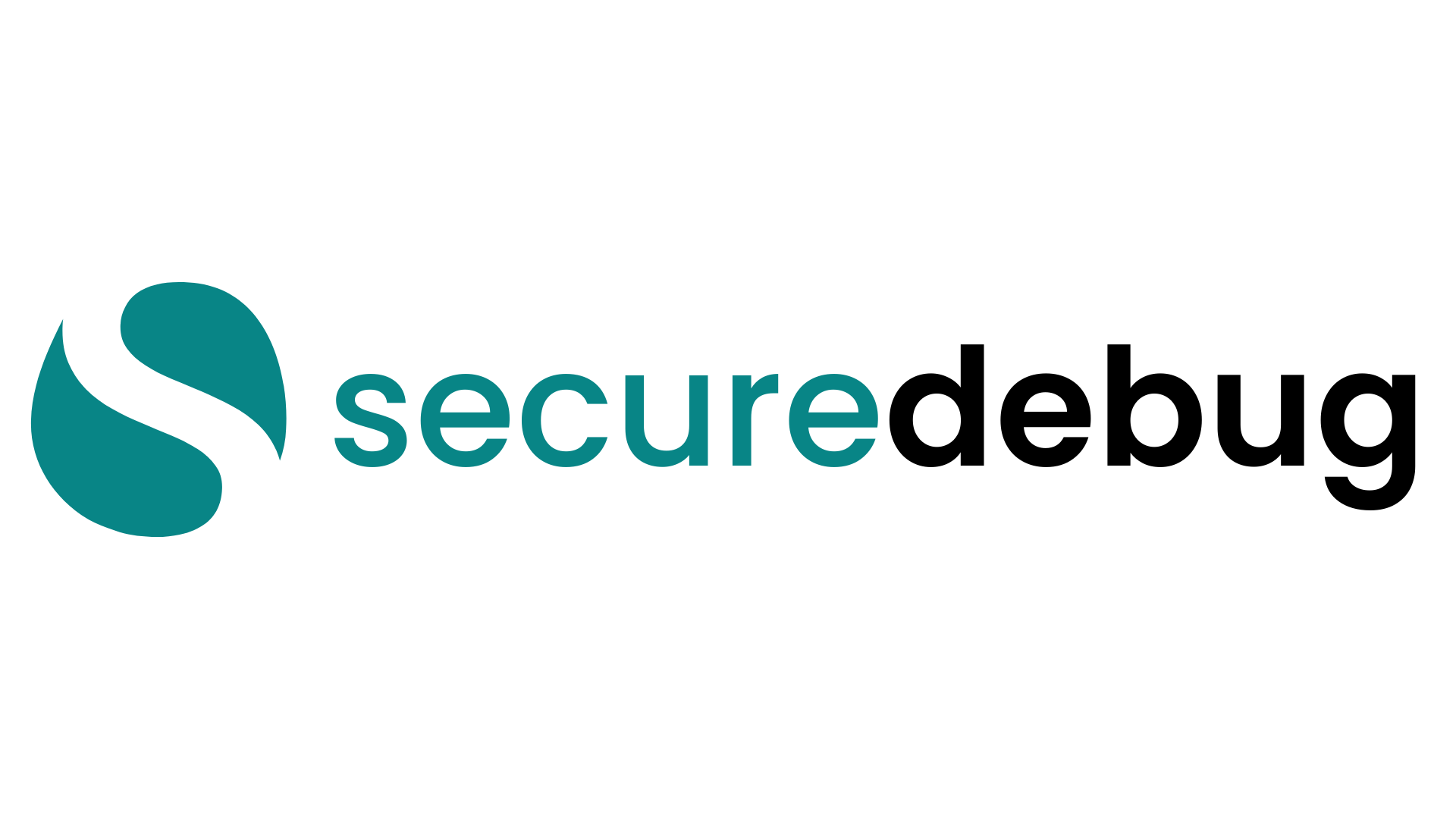
MongoDB’s document-oriented nature and ease of scaling have made it a mainstay in modern development stacks—powering e-commerce, analytics, gaming, IoT, social media, and more. While its schema flexibility and high performance are compelling, these same attributes can, if not managed properly, lead to serious security oversights. Cybercriminals have routinely exploited misconfigured MongoDB databases, sometimes wiping data and demanding ransom. Enterprises handling regulated data must also worry about legal fines and brand damage if personal or financial information is exposed. This guide comprehensively covers all angles of MongoDB security, from architecture and best practices to advanced deployments, testing, incident response, and cultural considerations, offering a roadmap for building robust defenses in your MongoDB environment.
1. Introduction to MongoDB Security
1.1 The Emergence and Growth of MongoDB in Modern Development
MongoDB’s genesis in the late 2000s aligned with the shift toward agile, microservices-based development. With a schema-less data model, it allowed developers to swiftly prototype features without the typical overhead of relational schemas. Over time, production usage soared—startups loved the lower friction, while large enterprises embraced the ability to scale horizontally with minimal code changes. But this popularity also attracted malicious actors, especially those scanning for misconfigured or insecurely exposed instances.
This subheading highlights the tension between developer convenience and the pressing need for robust security. MongoDB’s “get started quickly” approach can inadvertently lead to skipping authentication or leaving open ports, culminating in discovered vulnerabilities.
1.2 Significance of Security for Data-Centric Organizations
In an era where data drives decision-making, any compromise to a MongoDB instance can be devastating. Stolen personal records, manipulated financial transactions, or leaked intellectual property can erode user trust, trigger regulatory scrutiny, and lead to competitor advantage or public embarrassment. Ensuring thorough security is thus integral to business continuity, brand reputation, and compliance mandates.
Data breaches also impose operational costs: investigating incidents, patching systems, providing legal notifications, dealing with lawsuits, or paying regulatory fines. By weaving security into standard operations from the outset, data-centric organizations avoid these crisis-driven expenses.
1.3 Attackers’ Motivations: From Script Kiddies to Nation-States
Script kiddies might simply exploit readily available public exploits or default credentials to deface or ransom your data. More advanced groups (organized cybercrime, nation-states) may pivot from an exposed MongoDB to deeper network infiltration, seeking high-value data or persistent footholds. Healthcare, finance, or manufacturing data can be sold on dark web markets or used for espionage, intensifying threats in strategic sectors.
Understanding attacker motivations helps shape layered defenses. While script kiddies might be repelled by strong passwords and non-default ports, advanced actors require deeper measures like audit logs, multi-layer encryption, and zero trust. A risk-based approach ensures the highest-impact controls are prioritized.
1.4 Historical Security Incidents and Key Lessons Learned
Publicly reported MongoDB breaches frequently arose when administrators left default configurations or disabled authentication altogether. Attackers either demanded cryptocurrency ransoms for returning the data or simply posted the stolen databases online. Each major wave of ransomware or data exfiltration incidents underscored the necessity of authentication, encryption, and restricted networking. In the aftermath, the MongoDB community recognized that out-of-the-box convenience should be complemented by consistent security best practices—prompting evolutions in recent MongoDB releases.
2. Fundamental Concepts and Stakeholders
2.1 MongoDB Use Cases: E-Commerce, Analytics, IoT, Microservices
MongoDB’s schema flexibility suits varied domains: e-commerce catalogs (handling diverse product data), real-time analytics (processing logs or time-series events), IoT sensor data (storing unstructured device outputs), and microservices needing agile data modeling. Each use case has unique data flow patterns and performance needs that can influence security configurations—like indexing strategies, cluster topologies, and access control models.
When building e-commerce solutions, for example, you must thoroughly protect payment info or personal user data. IoT solutions demand rapid ingestion with minimal downtime, meaning you might emphasize robust cluster configurations and secure, ephemeral sessions. Microservices architectures highlight modular data ownership, calling for carefully scoped roles per service.
2.2 Key Roles: Developers, DBAs, Security Teams, Cloud Providers
Developers focus on building app logic and integrating with MongoDB drivers. DBAs or DevOps handle provisioning, patching, backups, and performance. Security or infosec teams define overarching policies, test for vulnerabilities, and respond to incidents. Cloud providers, if leveraged, supply underlying compute, storage, or managed services, offering partial or ephemeral security features but expecting the user to configure them properly.
Clear role delineations help avoid confusion. For instance, DBAs should not have the power to override a security policy without coordination, while security teams must collaborate with developers to avoid hamper development velocity or hamper production availability.
2.3 Data Sensitivity and Classification: Identifying Critical Collections
Not all MongoDB data is equally important. Transaction logs or user profiles with PII are high risk, requiring encryption, limited read privileges, and thorough auditing. Meanwhile, caching layers or ephemeral logs can adopt lighter controls. A classification policy ensures the correct level of security investment is devoted to each dataset. This approach also eases compliance, letting you handle “critical” data with advanced oversight while preventing over-engineering for benign data.
2.4 CIA Triad (Confidentiality, Integrity, Availability) in MongoDB
In typical deployments, ensuring confidentiality demands robust authentication, fine-grained roles, encryption at rest and in transit, plus network isolation. Integrity is upheld through journaling, replica sets, strong write concerns (e.g., w: majority), and audits that detect unauthorized changes. Availability requires replication sets or sharding with failover capabilities. Balancing these three aspects ensures no single dimension is neglected, preventing both potential data corruption from overshadowing confidentiality or restricting availability in pursuit of maximum security.
3. MongoDB Architecture and Components
3.1 Core Processes: mongod, mongos, and the Config Servers
At a fundamental level, mongod is the main database daemon. For sharded deployments, multiple shards are orchestrated by mongos query routers, which interpret cluster metadata stored on config servers. Securing each process is vital: mongod instances store data, so they must enforce access controls and encryption; mongos routes queries, requiring TLS for traffic with clients and shards; config servers must be locked down so attackers cannot manipulate cluster metadata or sabotage shard locations.
3.2 Replica Sets: Ensuring Redundancy and Fault Tolerance
A replica set typically has a primary node handling writes and secondaries replicating data. If the primary fails, a secondary is elected as the new primary. This setup ensures high availability. However, if secondaries are misconfigured or left open, attackers might sync data or perform read operations without the primary noticing. Additionally, consistency settings (e.g., readPreference) and election rules can affect data safety, highlighting the importance of secure replication channels, keyfiles, and robust anti-tampering measures.
3.3 Sharding for Horizontal Scalability
Large datasets or high throughput scenarios often push teams to shard. Each shard holds a subset of data, balanced across multiple nodes. The config servers store mapping details, while mongos ensures queries hit the correct shards. However, sharding complicates security: each shard node must be secured consistently, the config servers must be restricted from tampering, and the entire cluster must handle node-to-node encryption. Overlooking a single shard can undermine the entire environment’s integrity.
3.4 Deployment Scenarios: On-Premises, Cloud, Containerized, Hybrid
On-premises solutions offer full control but place the burden of patching, scaling, and network security on internal teams. Cloud providers (e.g., AWS, Azure, GCP) or MongoDB Atlas can automate aspects like backups or TLS termination but still require correct usage by the client. Containerized solutions with Docker or Kubernetes ease deployment but demand container-level security. Some orgs run hybrid setups, storing sensitive data in private data centers while using the cloud for ephemeral analytics. Each scenario has unique strengths and vulnerabilities requiring tailored security strategies.
4. Threat Landscape and Attack Vectors
4.1 Exposed Instances, Default Settings, and Ransomware
Early wave attacks discovered thousands of MongoDB servers left open with no authentication, or bind_ip: 0.0.0.0 defaults. Criminals wiped or exported data, leaving ransom notes. While newer versions fix some defaults, older setups remain prime targets. Attackers also exploit neglected dev/test environments or ephemeral containers that become inadvertently public. These incidents underscore that “security by default” is never guaranteed.
4.2 Public-Facing Ports, Data Wipes, and Malicious Recon
Port 27017 is commonly scanned. Attackers write automated scripts checking if they can list databases or create admin users. Once in, they either exfiltrate data or rename collections, leaving ransom instructions. Skilled adversaries can also remain stealthy, quietly exfiltrating data for espionage, forging documents or systematically altering data for sabotage. The growth of scanning tools means even ephemeral misconfigurations can be exploited within minutes or hours.
4.3 Insider Threats and Privilege Misuse
An employee with overbroad privileges might copy entire database backups or manipulate data for personal gain. Insider threats can be malicious or accidental—someone might inadvertently run a destructive query or leak credentials. Minimizing privileges for each role, combined with thorough logging, helps identify or limit insider misdeeds.
4.4 NoSQL Injection and Schema Manipulation
Applications that use dynamic queries could inadvertently allow user inputs to shape the query structure or operators (e.g., $gt, $in). Attackers exploit injection flaws to expand results or bypass authentication logic. For instance, injecting {"$or":[{}, {}]} can trick queries into returning all documents or ignoring checks if code isn’t sanitized. Careful input validation and robust coding patterns block such manipulations.
5. Risk Assessment and Threat Modeling for MongoDB
5.1 Identifying High-Value Collections and Data Sensitivities
While some collections store ephemeral logs or public content, others hold personal data, card info, or proprietary algorithms. Catalog these collections and categorize them by sensitivity. This classification shapes encryption usage, retention schedules, archiving requirements, and stricter RBAC.
5.2 Evaluating Attack Likelihood: Public Cloud vs. On-Prem vs. Hybrid
Public cloud deployments may experience more external scanning if misconfigured security groups or open endpoints appear. On-prem solutions face insider risk or potential infiltration from corporate network breaches. Hybrid solutions must unify network security across multiple environments, ensuring consistent policy enforcement. Threat modeling includes analyzing potential pivot paths from other cloud services or local subnets.
5.3 Impact Analysis: Financial Damage, Legal Liability, Brand Erosion
Losing personal or financial data triggers user distrust, negative press, potential lawsuits, or fines under regulations. If data is manipulated (e.g., a supply chain app’s product details changed), it can cause major operational disruptions. Brand reputation can sour if the breach becomes high-profile. Additionally, repeated incidents degrade staff morale and hamper future expansions or partnerships.
5.4 Prioritizing Mitigations via a Cost-Benefit Approach
Imposing maximum security in a small dev environment might hamper developer velocity unnecessarily. Conversely, a high-volume production environment with critical user data warrants advanced encryption, auditing, and segmentation. Risk-based prioritization ensures that the most vital resources (like production clusters containing PII) get the tightest security posture first, while dev/test clusters adopt essential but moderate measures that still prevent accidental exposures.
6. Regulatory, Compliance, and Ethical Underpinnings
6.1 How GDPR, CCPA, and Other Laws Affect MongoDB Storage
When storing personal data of EU or California residents, organizations must handle data subject requests, data breach notifications, and “right to be forgotten” erasures. MongoDB’s flexible schema means one must track where personal fields are stored, ensure they can be efficiently removed or anonymized, and confirm compliance with consent logs. Failing to do so can incur heavy fines.
6.2 HIPAA for Healthcare Entities Using MongoDB
Protected Health Information (PHI) must remain encrypted at rest, and every access or modification event must be logged. MongoDB’s auditing feature can help track who accessed sensitive records and when. Business Associate Agreements (BAAs) might be required with hosting providers. Setting up strong RBAC ensures that staff only see the minimum PHI required for their roles, limiting potential insider breaches.
6.3 PCI DSS for Payment Data
When storing partial or full credit card data in MongoDB, compliance requires segmenting cardholder data from other sets, ensuring full encryption of any PAN fields, restricting queries that reveal full card data, and logging all admin or read actions. Annual QSA assessments might demand proof of these measures, plus evidence of vulnerability scans and penetration tests. Non-compliance can lead to steep fines or losing the ability to process payments.
6.4 Multi-Region/Multinational Challenges: Data Localization and Encryption
Some nations insist data remain within their physical borders. Sharding or replica sets might inadvertently replicate data across regions if not carefully configured. Enforcing region-specific encryption keys or separate clusters ensures compliance with data localization mandates. Complexities also arise if an org must handle cross-border data transfers, requiring thorough documentation and possibly multi-lingual compliance disclaimers.
7. Basic MongoDB Security Measures
7.1 Enabling Access Control and Creating the First Admin User
In newly installed MongoDB, if you run it with --auth disabled or have it bound to all interfaces without user authentication, attackers can simply run use admin; db.createUser(...) to set themselves as admin. Immediately after installation, enable authentication (using --auth or in config), create an admin user with a strong password (or x.509 certificate), then set up application-specific users or roles.
7.2 Role-Based Access Control (RBAC): Minimizing Permissions
MongoDB’s built-in roles can suffice for many scenarios: read, readWrite, dbOwner, userAdmin, clusterAdmin, clusterManager, etc. If your app only needs read access to certain collections, do not grant it full dbOwner. For more complex needs, define custom roles with very granular privileges. This approach drastically reduces the blast radius if an application is compromised or credentials leak.
7.3 Network Binding: Avoiding 0.0.0.0 by Default
Binding to 127.0.0.1 (localhost) ensures that only local processes can connect. If your cluster needs remote connections, bind specifically to internal IP addresses or private subnets. Tools like iptables or cloud security group rules can further limit inbound traffic to known dev networks or whitelisted IP ranges.
7.4 Applying Patches and Updating MongoDB Versions
Out-of-date MongoDB releases often contain known CVEs. Attackers monitor patch announcements, targeting unpatched servers. Repositories like https://repo.mongodb.org or official Docker images ensure you get validated updates. Always read release notes, verifying that no backward-compatibility or security-critical changes will break your environment.
8. Encryption, Authentication, and Transport Security
8.1 Encryption at Rest: The Deep Mechanics
MongoDB offers a native WiredTiger encryption at rest feature in Enterprise or using third-party solutions. By encrypting the physical data files, stolen disks or images become unreadable. If an external Key Management Interoperability Protocol (KMIP) server is integrated, the encryption keys remain separate from the data volume, preventing offline decryption if an attacker only obtains the DB files.
8.2 TLS/SSL for In-Transit Protection
Activating TLS ensures all traffic between clients, replica set members, and config servers is encrypted. Even within a corporate LAN, internal threats or compromised hosts can sniff data if it’s plaintext. Proper TLS setup involves creating certificate authority (CA) certificates and distributing node certificates to each instance, then specifying them in net.ssl config sections.
8.3 x.509 Certificate Authentication for Internal Nodes
Beyond standard password-based auth, x.509 certificates provide a robust mechanism for authenticating each MongoDB node in a cluster, ensuring rogue hosts can’t just join. Each node must present a certificate signed by a trusted CA. The cluster checks that the subject common name (or SAN) matches the node’s identity. This approach fosters zero-trust inside multi-node clusters.
8.4 Eliminating Weak Ciphers and Outdated Protocols
Disable SSLv3, TLS 1.0/1.1, or older ciphers that are vulnerable to known exploits (e.g., BEAST, POODLE). Tools like SSL Labs or nmap’s ssl-enum-ciphers script can test your configuration. Modern ciphers like AES-256-GCM with forward secrecy help ensure eavesdroppers can’t decrypt recorded traffic later if they compromise keys.
9. Advanced MongoDB Configuration and Hardening
9.1 Securing Replica Sets and Shards with Keyfiles, TLS, and Strict Roles
In a production cluster, each node uses a keyfile to authenticate to other nodes, preventing unauthorized servers from joining the set. Combine this with TLS so all replication traffic is encrypted. Store keyfiles in restricted directories with correct file permissions (e.g., chown mongod:mongod; chmod 600), blocking OS-level tampering or reading by unauthorized users.
9.2 Auditing and Logging: Fine-Tuning, Performance Impacts, Rotation
Enable MongoDB’s auditing, specifying which events or operations to log (e.g., writes to certain collections, admin commands). Understand the performance overhead: in heavily loaded clusters, overly broad auditing can degrade throughput. Implement log rotation to avoid filling disks and ensure logs are archived or shipped to SIEM solutions for correlation with other event data.
9.3 Disabling Unnecessary Features: Removing the HTTP Console, etc.
Some older MongoDB versions had an HTTP admin interface on a secondary port, providing stats or possible console access. This is a known security hazard if left open. Also disable the REST interface if present, turning off unneeded features that might have undiscovered vulnerabilities or minimal usage.
9.4 Minimizing Attack Surface with Firewalls, IP Whitelists, and Reverse Proxies
Even if the DB is behind corporate firewalls, adopt host-based or container-level firewall rules allowing only known subnets or specific IP addresses. Reverse proxies or load balancers can handle TLS termination, advanced traffic inspection, and re-route logic, shielding direct DB addresses from external discovery or scanning.
10. Authentication, Authorization, and Role Management
10.1 Built-in Roles Explored: read, readWrite, dbOwner, clusterAdmin, etc.
MongoDB ships with default roles that meet most straightforward needs. The “read” role grants read access to the selected database’s collections. “readWrite” allows inserts, updates, or deletes. “dbOwner” merges high-level privileges, while “clusterAdmin” can manage the entire cluster topology. Carefully selecting among these roles for each user or service prevents accidental overprivilege.
10.2 Creating Custom Roles for Granular Control at Collection Level
Large or regulated enterprises might require extremely specific rights, e.g., a role that can only update a single field in a single collection. MongoDB’s custom roles let you specify actions (insert, update, remove, createIndex) and resource scope. By carefully scoping these, you can isolate user permissions so that a breach in one microservice does not affect the rest of the cluster.
10.3 Password Policy: Complexity, Rotation, and (Optional) MFA
While MongoDB itself doesn’t enforce advanced password policies, you can adopt an external approach to ensure complex passphrases, periodic rotations, or multi-factor auth. Some enterprise setups integrate external identity providers, letting them apply corporate password policies. Encouraging passphrase lengths and restricting reuse helps defend against brute force attempts or credential stuffing.
10.4 External Integration: LDAP, Kerberos, and SAML for Unified Identity
Environments with robust directory services typically unify identity management so employees use their corporate credentials for DB access. Kerberos-based single sign-on or LDAP group mappings can simplify role assignments. SAML-based solutions can pass identity tokens from IDaaS platforms. This approach consolidates credential lifecycle management, reducing the chance of orphaned DB accounts.
11. Operational Security and Maintenance
11.1 Backup and Recovery Strategies: mongodump, Snapshots, Ops Manager
Frequent backups are crucial. mongodump provides logical dumps, good for partial restores but can be slow for large datasets. Filesystem snapshots (like LVM, EBS) capture consistent states quickly. Ops Manager or enterprise solutions automate backups, ensuring minimal performance overhead and easy point-in-time restores. Periodically test restore procedures in a staging environment.
11.2 Balancing High Availability and Disaster Recovery Plans
Replica sets handle local node failures, but a full data center outage or cluster corruption demands offsite or cross-region replication. Some teams deploy a multi-region or multi-cloud approach, ensuring a shard or replication set is always accessible. Plan failover steps, verifying that relevant DNS changes or application configs update seamlessly if the primary region is lost.
11.3 Monitoring: Observing Performance, Security Events, and Anomalies
Monitoring tools (MongoDB Ops Manager, Prometheus exporters, ELK integration) track key metrics—CPU usage, query throughput, locks, or suspicious DB commands (like unauthorized user creation). By analyzing trends, you can spot slow queries, potential infiltration attempts, or abnormal resource usage indicative of data exfiltration scripts.
11.4 Handling Growth: Sharding, Hardware Upgrades, or Cloud Scaling Without Security Trade-Offs
As your data and user base expand, scaling out might require adding more shards. Ensure new shard nodes or additional replica set members adhere to the same security baseline (authentication, TLS, up-to-date patches). Avoid shortcuts that degrade security, e.g., disabling auditing for performance or exposing ports for quicker dev convenience.
12. Network and Infrastructure-Level Protections
12.1 VPC Segmentation on AWS/Azure/GCP: Isolating MongoDB Instances
When deploying in the cloud, keep your MongoDB servers in private subnets, not publicly routable. Only allow inbound connections from known application subnets or from a bastion host. Security groups or network security groups define granular rules at the instance or container level.
12.2 Bastion Hosts for Admin Connections
DBA staff typically shouldn’t SSH or connect directly to production nodes from the internet. A bastion host—hardened, with multi-factor auth—acts as a gateway. Log all session activities, enforce SSH key usage, and limit commands if possible. This approach ensures accountability and minimal direct exposure to DB servers.
12.3 TLS Termination at Load Balancers or Proxies
For external client connections, a load balancer or reverse proxy can handle TLS termination, distributing requests across multiple mongos or mongod instances. This centralizes certificate management, enabling easier renewal or rotation. Internally, you can still use TLS for node-to-node encryption or rely on a trusted internal network if risk is deemed minimal, though the latter is increasingly discouraged.
12.4 Micro-Segmentation and Zero-Trust Networking
Large data centers benefit from micro-segmentation, subdividing the network so each service or container can only talk to necessary dependencies. Zero trust means each request or session is validated for identity and context, preventing a single compromised node from pivoting across shards or config servers. Tools like Istio or Calico in Kubernetes enforce these segmentations at the service mesh or network overlay layer.
13. Docker, Kubernetes, and Containerized Deployments
13.1 Containerizing MongoDB: Building Secure Images, Minimizing Attack Surface
When creating Docker images, use official or verified bases, install only required packages, run the mongod process as a non-root user, and apply health checks. Keep your container environment minimal, logging potential suspicious activities with container-level auditing. If you store data in host-mounted volumes, ensure only the mongod user can read them.
13.2 Kubernetes Operators for MongoDB: Security in Resource Definitions
Operators simplify provisioning, scaling, and updates but also manage high privileges in the cluster. Ensure the operator’s RBAC is restricted to only the necessary namespaces or resources. In your CustomResourceDefinitions, define security contexts, forcing TLS, specifying readiness probes, and requiring ephemeral or persistent volumes with encryption if your cluster supports it.
13.3 Managing Secrets Securely in Container Orchestrators
Hardcoding MongoDB credentials or keyfiles in Docker images is a major risk. Instead, use Kubernetes secrets, HashiCorp Vault, or cloud KMS to store secrets, injecting them at runtime as environment variables or mounted volumes. Restrict secret read privileges so only the necessary pods or service accounts can retrieve them.
13.4 Container Escape Prevention: Host OS Hardening, SELinux, seccomp
Attackers can attempt to escalate from a container to the host, then tamper with or copy the DB data. Host-level security modules like SELinux or AppArmor confine processes. seccomp filters limit syscalls that containers can invoke. Tools like falco or sysdig can watch for suspicious container actions in real-time, providing an additional layer of intrusion detection.
14. Testing, Validation, and Penetration Approaches
14.1 Automated Scans for Open MongoDB Ports, Insecure Endpoints
Scripts can easily scan IPv4 or cloud IP ranges for open 27017. Tools like Shodan or Censys reveal publicly exposed instances. Repeated scanning of your environment ensures no new open or dev/test instance accidentally made it to the public net, or that ephemeral test clusters remain ephemeral.
14.2 Pentesting for NoSQL Injection, Admin Bypass, and Auth Escalation
Penetration testers probe application logic to see if user inputs can modify MongoDB queries, skipping or forging conditions. They also examine user roles for misconfigurations that might let a normal user escalate. If HTTP or gRPC APIs connect to MongoDB, the pentesters attempt injection or fuzzing via these layers.
14.3 Fuzzing APIs That Interact with MongoDB
Data fuzzing systematically feeds random or malformed inputs to application endpoints, checking for crashes or logic breaks. In the NoSQL context, that can reveal injection vectors or buffer overflows in drivers. Considering how flexible MongoDB queries can be, fuzzing offers a potent approach to discovering hidden vulnerabilities.
14.4 Continuous Integration of Security Checks in DevOps Pipelines
In a DevSecOps environment, code commits trigger automated tests, including scanning Dockerfiles for insecure ports or misconfigurations, verifying RBAC rules in config files, and ensuring that environment variables or config maps don’t store credentials in plaintext. Quick feedback loops let developers fix issues before merges, preventing insecure defaults from reaching production.
15. Incident Response and Breach Management
15.1 Recognizing Compromise: Ransom Notes, Strange Admin Accounts
A classic sign is discovering your DB data gone or replaced by a “Send X BTC to recover your data” message. Another indicator might be a newly minted admin user that your team never created. Unusual read or write spikes at odd hours or malicious queries in logs are also clues pointing to infiltration.
15.2 Rapid Containment: Isolating Instances, Rotating Credentials, Preserving Forensic Data
Immediately isolate compromised nodes from the network to halt ongoing data exfiltration. Rotate keyfiles, user passwords, or TLS certificates. But be sure to preserve logs and disk images for forensics—shutting down everything might hamper investigations if ephemeral data is lost.
15.3 Forensic Analysis: Root Cause Determination, Attack Vector Mapping
A thorough incident analysis might reveal a default password leftover from dev or an unencrypted config file in Git. Attackers could have escalated from a misconfigured Web UI to the DB. Document each step of the intrusion chain, ensuring lessons feed into revised policies.
15.4 Post-Incident Hardening and Communication
Once the immediate threat is removed, re-secure the environment: patch versions, add multi-factor auth, integrate continuous scanning. Communicate transparently with stakeholders or regulators, fulfilling breach notification rules. This honest approach fosters trust while demonstrating your improvement plan.
16. Cultural and Behavioral Factors
16.1 Training Developers and DBAs on the Dangers of Default Configurations
A single oversight—like leaving --auth disabled—can doom the entire cluster. Regular training sessions, internal wikis, or short video modules can help devs and DBAs internalize best practices, from enabling TLS to avoiding “use admin” and universal privileges.
16.2 Embedding Security Requirements in Product Backlogs, Minimizing Rework
Security tasks often get postponed until the end of a sprint or major release, leading to incomplete coverage or rushed fixes. By weaving security acceptance criteria into user stories from the start, teams reduce last-minute scrambles and ensure consistent compliance with policies or regulatory demands.
16.3 Maintaining a Mindset of Continuous Reassessment
Over time, new microservices join the cluster, new data fields get added, or staff changes occur. A posture that frequently revisits roles, TLS cert expirations, or ephemeral dev environments ensures that no security drift accumulates silently, preventing compounding vulnerabilities.
16.4 Transparency with Clients About Data Protection Mechanisms
If you handle external data or host multi-tenant SaaS, publish a security overview detailing encryption, replication, intrusion detection, backup strategy, and compliance measures. This fosters trust among clients, auditors, and potential customers.
17. Forensics, Logging, and Auditing
17.1 The MongoDB Audit Log: Enabling, Filtering, Storing Logs Securely
MongoDB’s Enterprise edition includes auditing, capturing events like authentication, DDL changes, or specific user actions. By customizing filters, you can focus on suspicious commands or critical DB interactions. Storing logs in a secure location with restricted read access ensures attackers can’t tamper with evidence.
17.2 Retention Strategies: Balancing Forensic Needs vs. Storage Costs
Logs can grow large, especially under heavy loads. Decide on a retention period that meets compliance (e.g., 1-2 years) and forensic best practices but doesn’t saturate storage. Rotation policies might archive logs to cheaper mediums or a dedicated SIEM environment for long-term indexing.
17.3 Integration with SIEM Solutions (Splunk, ELK Stack)
Forwarding MongoDB logs (both audit logs and normal logs) to SIEM helps correlate DB anomalies with broader events (e.g., suspicious network scans or user account escalations). Real-time dashboards can alert on unusual query patterns or repeated authentication failures, letting teams quickly respond.
17.4 Legal and Chain-of-Custody for Digital Evidence
If the logs are needed in court or for an insurance claim, demonstrate that they’re unmodified. Hash or sign log files, maintain a chain-of-custody process, and store backups in an immutable location. This approach ensures that any legal challenges to evidence authenticity can be countered with thorough documentation.
18. Enterprise Policies for MongoDB Security
18.1 Developing a Formal MongoDB Security Policy Document
A well-defined policy clarifies everything from environment standards (TLS required, at-rest encryption for sensitive collections) to naming conventions for roles. It includes how dev environments differ from production, patching timelines, and procedures for data classification changes or new microservices.
18.2 Aligning with the Broader ISMS or Data Governance Framework
If your org follows ISO 27001 or has a data governance board, ensure your MongoDB policies tie into broader risk registers, internal controls, or DLP solutions. For example, if corporate policy forbids direct DB connections from untrusted networks, reflect that in your cluster networking rules.
18.3 Defining Roles: Who Administers Credentials, Who Monitors Logs?
Assign accountability so that dev leads can’t simply override security constraints. The security team might hold key management responsibilities, while DBAs handle day-to-day roles. This separation of duties reduces the chance for insider sabotage or accidental misconfiguration.
18.4 Audits, Reviews, and Setting KPIs for Security Posture
Regular internal audits measure compliance with your MongoDB policy. Track metrics like “Number of unpatched servers after X days,” “Frequency of role reviews,” or “Mean time to fix vulnerabilities found in staging.” These KPIs let leadership see if the environment remains stable or requires improvements.
19. Compliance, Standards, and Certifications
19.1 PCI DSS Requirements for Payment Data in MongoDB
PCI DSS demands encrypting cardholder data, limiting who can query it, and logging all access. MongoDB might store partial PAN tokens, but never store full unmasked card numbers without explicit reason and encryption. Segment these collections from other data to prevent lateral movements by attackers.
19.2 HIPAA for Healthcare: Access Controls, Audit Trails, and PHI Encryption
Healthcare databases must maintain a detailed record (audit log) of all reads/writes to PHI. Additionally, strong authentication and RBAC are essential so nurses and doctors see only relevant patient data. Offsite replication requires encryption keys or tunnels to meet HIPAA’s privacy and security rules.
19.3 ISO 27001 and SOC 2: Control Objectives in MongoDB Environments
These frameworks revolve around demonstrating consistent, well-documented controls. MongoDB security measures—like TLS, role separation, logging, backups—provide the evidence auditors need. Document each control, how it’s enforced, and how you remediate issues to remain audit-ready.
19.4 Data Protection Laws (GDPR, CCPA) and Privacy by Design
Under these laws, personal data must be minimized, protected, and easily deleted upon user request. Databases must track where personal fields exist, facilitate quick purging, and ensure internal usage logs meet transparency requirements. This underscores the synergy between application design, schema design, and robust DB-level controls.
20. Future Trends in MongoDB Security
20.1 Post-Quantum Cryptography for Long-Term Data Protection
MongoDB data with extended retention might eventually face decryption by quantum adversaries. Considering PQC algorithms for key management or combining ephemeral keys in short-lifecycle data streams can future-proof archives. While immediate quantum threats are not mainstream, forward-looking organizations are planning migrations or layered encryption strategies.
20.2 AI-Assisted Security Tools for Real-Time Database Behavior Analysis
Machine learning can watch real-time queries, analyzing patterns or anomalies that deviate from typical usage profiles. For instance, an admin-level read operation that extracts a huge portion of data at an unusual time might trigger an automated block or at least an alert for manual review.
20.3 Zero Trust Implementation at the Document/Collection Level
Beyond network segmentation, zero trust can apply to DB queries themselves. Each query is evaluated with full context—who is the user, what is their role, what data are they requesting—enforcing dynamic policy checks. This approach requires advanced logic within the DB driver or a security gateway orchestrating requests.
20.4 DevSecOps Evolution: Integrating Automated Hardening, Checks, and Quantum-Safe Methods
As DevOps pipelines become the norm, new tools allow scanning Docker images for insecure MongoDB configs, verifying that ephemeral dev clusters remain locked down, and ensuring each microservice environment meets the same security baseline. Over time, code scanning for quantum readiness or injection flaws might occur automatically, preventing insecure merges.
Conclusion
MongoDB’s flexible, scalable, and developer-friendly features have propelled it to the forefront of modern data infrastructures. However, the same agility and open defaults can lead to serious security pitfalls if not addressed thoroughly. By consistently applying authentication, RBAC, encryption, auditing, and strong operational controls across all environments, teams can harness MongoDB’s strengths while safeguarding mission-critical data.
Adopting a layered approach—covering network isolation, container security, continuous testing, compliance alignment, and a security-first culture—ensures the environment remains robust under evolving threats. As quantum computing, AI-driven attacks, and zero-trust paradigms reshape the broader landscape, evolving MongoDB security in tandem maintains data integrity, privacy, and availability for businesses worldwide.
Frequently Asked Questions (FAQs)
Q1: Can I rely on MongoDB’s default settings to protect production data?
MongoDB’s newer releases improve secure defaults, yet they are not foolproof. You still need to enable authentication, properly configure TLS, restrict bind addresses, define roles, and possibly integrate external identity systems. Relying solely on defaults is never advisable for production workloads.
Q2: How often should I update my MongoDB environment?
Security best practice suggests applying minor patch releases promptly (within days or weeks), especially if they address CVEs. Major upgrades require testing for backward compatibility. Aim for a regular patch cycle aligned with your business risk tolerance.
Q3: Is enabling encryption at rest enough to protect data from all threats?
Encryption at rest defends against physical theft of disks or backups but doesn’t stop unauthorized access if an attacker gains valid credentials or OS-level privileges. A combination of encryption, RBAC, auditing, and network segmentation is necessary for full coverage.
Q4: Are free solutions like the Community Edition enough for enterprise security?
Many enterprise features—like auditing, advanced encryption, and LDAP integration—are easier with MongoDB Enterprise. The Community edition can still be secured, but the Enterprise edition or Atlas might expedite configuration, compliance, and advanced operational capabilities.
Q5: How do we handle ephemeral or dev/test clusters in a secure manner?
Restrict them behind firewalls, limit or obfuscate real data, and regularly tear them down after use. Use quick scripts or DevOps templates that incorporate secure defaults: RBAC, minimal privileges, encryption for sensitive test data, and ephemeral credentials rotated with each build.
References and Further Reading
- MongoDB Security Documentation: https://docs.mongodb.com/manual/security/
- OWASP Database Security Project: https://owasp.org/
- NIST SP 800-53 for Information Systems: https://csrc.nist.gov/publications/
- ISO/IEC 27001 Standard: https://www.iso.org/isoiec-27001-information-security.html
- PCI SSC Resources: https://www.pcisecuritystandards.org/
Stay Connected with Secure Debug
Need expert advice or support from Secure Debug’s cybersecurity consulting and services? We’re here to help. For inquiries, assistance, or to learn more about our offerings, please visit our Contact Us page. Your security is our priority.
Join our professional network on LinkedIn to stay updated with the latest news, insights, and updates from Secure Debug. Follow us here






